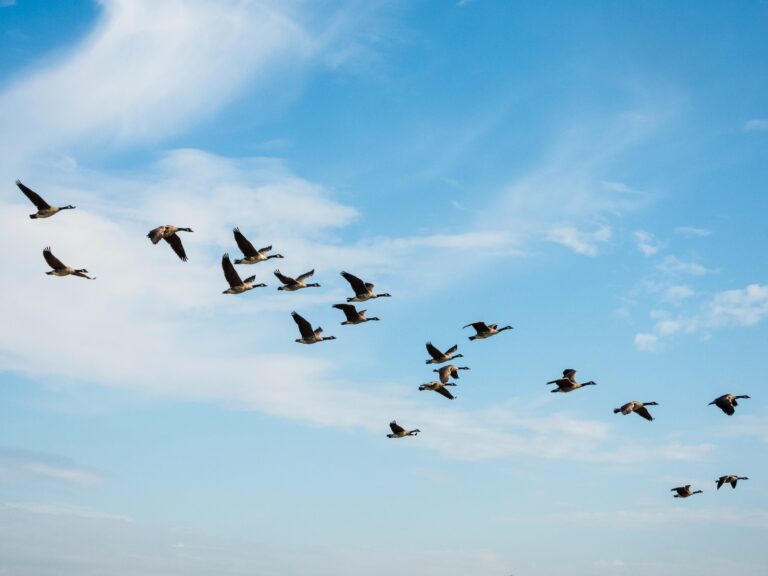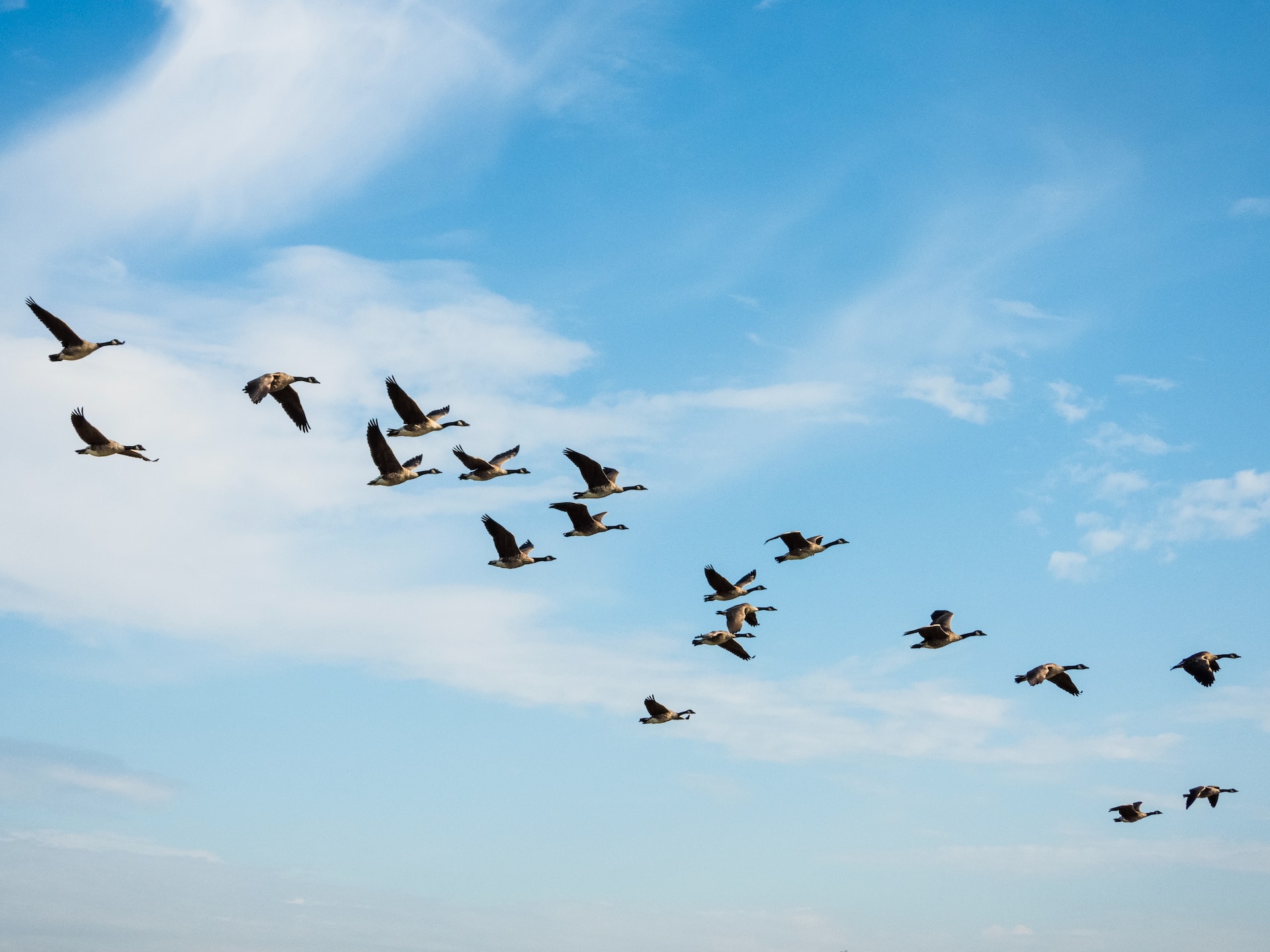
[ad_1]

As fall begins across the Northern Hemisphere, hundreds of millions of birds are preparing for a journey that can take them thousands of miles to warmer climates near the equator. These fall migrations are both a simple fact of life for many avian species, and an epic adventure that takes them halfway across the globe.
Seasonal migrations allow birds to take advantage of prime habitats for feeding and reproducing in the warmer summer months before escaping the deadly cold of winter. But many birds never make it. Studies estimate that hundreds of millions of birds die every year on their journeys, largely from interactions with human-built structures. These massive mortality events have likely been happening for decades. Now, some scientists and bird lovers are trying to do something about it.
A Dangerous Journey
As summer wanes, migrating birds are highly attuned to the rhythms of the natural world. They use signals like the amount of daylight, the position of the Sun, temperature and food availability to assess when to begin their journey south, which can take some weeks. Spring migrations typically last from March 1 to June 15, and fall migrations span August 15 to November 30.
As they travel, migrating birds use the Earth’s magnetic field, the position of the Sun and natural landmarks like rivers to navigate. Many birds travel at night, relying on the stars for guidance.
“They’re traveling thousands and thousands of miles to get from one place to another, just so they can breed and continue that cycle,” says Chloe Crumley, the engagement manager for Audubon Texas. “They’ve been doing this for generations.”
For these night flyers, lit-up cities and buildings pose a big problem. The bright lights blot out the stars, meaning the birds can’t navigate, and they can draw birds in, like moths to a flame. Once attracted by the blazing lights of an office tower, birds simply circle in confusion, or land for the night, exposing them to threats ranging from cats to power lines. Many die from collisions with the buildings themselves. A 2015 study estimated that anywhere from 365 million to 988 million birds die in the U.S. every year from building collisions alone.
Other studies find that large, glassy buildings surrounded by open space and open lawns, as well as the presence of nearby vegetation and feeders, can all contribute to increased bird collisions. Some birds may not die right away, or get picked up by scavengers, meaning it’s hard to count how many have died around a given building.
“These birds are facing those growing threats every year as we build more structures, as we turn on more lights in the evening,” Crumley says
One simple way to save millions of birds is simply to turn off or turn down lights during migration times, Crumley says. Buildings like office towers usually don’t need to be fully lit up at night, and homeowners can play a role too by turning off or shielding indoor and outdoor lights.
“If we can reduce the overall skyglow and reduce the amount of lighting in our communities, it will keep our birds on the right path,” Crumley says. “ It can be really as simple as turning off your porch light.”
How to Protect Birds
To raise awareness around simple steps to protect birds, campaigns like Lights Out are advocating for simple changes that could help save millions of birds every year. Begun in Canada in the 1990s, the effort has spread to more than 30 cities in North America, including in Texas, where Crumley and the Audubon Society organize yearly efforts focused on protecting birds. With education campaigns and helpful toolkits, Lights Out is dimming the human-built environment to give birds a fighting chance at making it to their migration destinations.
There are a few simple ways homeowners can help, Crumley says. Draw your blinds at night to keep indoor light from escaping, and turn off outdoor lights during migration seasons between 11 PM and 6 AM when birds are flying. You can use timers or motion sensors to help turn on outdoor lights only when you need them, too. Make sure outdoor lights are aimed downward, or have fixtures that prevent light from escaping upward, where it’s typically not needed anyway. Warmer-colored bulbs (toward the red end of the spectrum) are also more wildlife-friendly.
Dimming our cities helps more than just birds, too. Turning lights off saves energy, reducing electricity costs and greenhouse gas emissions. Allowing a little more darkness also reduces urban light pollution, which blots out the stars, and can be harmful for species beyond just birds. To get involved with tracking and helping to mitigate light pollution in your community, check out project Globe at Night, which asks volunteers to use constellations to monitor bright the night sky is near them.
Beyond giving birds darker night skies to fly through, there are a number of ways you can get involved with watching, and protecting, migration paths in the spring and fall. Track species in your yard or community with platforms like eBird, which allows users to log and identify birds near them. You can keep an eye on migrating insects, birds, and more with Journey North, which asks volunteers to track monarch butterflies, six species of hummingbirds, American robins, common loons, red-winged blackbirds and other species.
Researchers used data from eBird in a 2022 paper published in the journal Ecosphere to line up levels of light pollution with the migrations of several bird species. They found light pollution levels in Central America increased as some species of birds migrated through the region, and that light pollution increased in southeastern North America during some species’ breeding season. The data could allow conservationists to design light pollution reduction policies that are most targeted to bird protection.
In 2021, researchers used data from eBird to understand how birds were colliding with planes near airports. The data let them see when collisions were more likely, a first step toward preventing them. Your data can make a big difference for helping scientists and policymakers understand how to protect birds.
Join our next online SciStarter LIVE! on Tuesday September 26, 2023 at 2pm ET, learn about efforts across the country to turn off the lights to protect migrating birds. We’ll hear from representatives from Missouri and Texas about the Lights Out Initiative. Register for the free, virtual event here.
[ad_2]